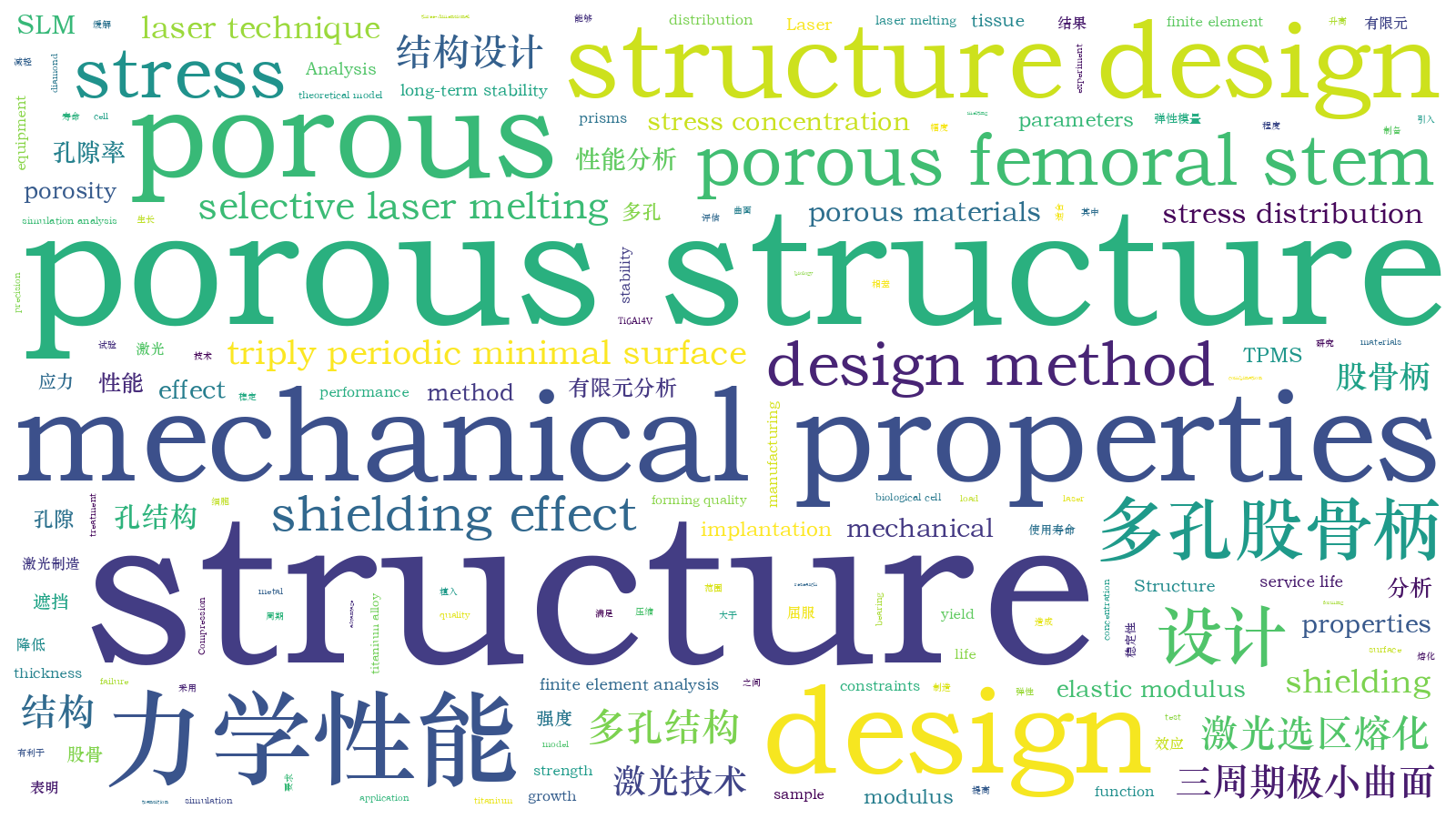基于SLM的股骨柄多孔结构设计与力学性能分析  下载: 1355次封面文章
下载: 1355次封面文章
The hip joint is one of the most frequently used load-bearing parts of the human body, which is at risk of lesions and injuries. Presently, total hip arthroplasty (THA) is a common treatment method for hip disorders. However, the elastic modulus of the traditional metal prosthesis used in surgery is extremely large, which leads to stress shielding and results in aseptic loosening of the prosthesis. This is one of the main reasons of THA failure. In the medical field, porous structures are often used in the prosthesis to reduce its elastic modulus. Therefore, various porous structures are used in the femoral stem, such as diamond structure, body centered cubic structure, and columnar octahedral structure. The introduction of these structures can reduce the stress shielding effect. However, these structures are not the best choice because they are extremely different from the human bone tissue structure. Moreover, these porous structures are mainly composed of prisms. There is no smooth transition between the prisms, which causes stress concentration and weakens the performance of the prosthesis. Based on the triply periodic minimal surface (TPMS), this study evaluates a design method of porous structure of femoral stem prosthesis, which can effectively reduce its elastic modulus and alleviate the stress shielding effect. Moreover, the porous structure based on TPMS has a smooth and continuous interior, good mechanical properties, and natural affinity in biology. Furthermore, several features of the porous structure can be precisely controlled by changing the parameters of the function, which has provided the greatest possibility for simulating the human bone tissue structure. This will be beneficial in inducing bone growth, enhancing the combination of prosthesis and bone tissue, improving the long-term stability of the prosthesis after implantation, and extending the service life of the femoral stem. The design method and research results of this study are expected to provide a new idea for improving the performance of porous femoral stems.
This study analyzed the porous structure design method based on TPMS. Using the relationship between the design parameters of TPMS structure and porosity, three-dimensional models of P, G, and D structures with porosity of 55%-75% were established. Then, the corresponding Ti6Al4V titanium alloy samples were prepared using selective laser melting (SLM) technology, and their forming quality was characterized. Furthermore, the compression experiment was conducted on the sample, and the effects of wall thickness and porosity on the elastic modulus and yield strength of the TPMS structure were evaluated. The types of porous structures suitable for the femoral stem were selected. Finally, the structures with different porosities were filled in the femoral stem, and the stress shielding rate of these femoral stems after implantation was calculated by finite element analysis. Its ability to alleviate the stress shielding effect was evaluated.
In the analysis of the porous structure design method for femoral stem prosthesis, the function of the porous structure in the femoral stem and manufacturing precision constraints of equipment were considered (Table 1). Compression experiments showed that the mechanical properties of these structures can meet the service requirements of the femoral stem (Table 3). Moreover, the P structure can be adjusted through the wall thickness and porosity, thereby greatly adjusting its mechanical properties (Figs.8, 9). The relationship between structural design parameters and mechanical properties of the porous structure is calculated using Gibson-Ashby’s theoretical model (Formulas 8-13), which can achieve the purpose of using design parameters to predict mechanical properties of the porous structure. The simulation analysis results of femoral stress before and after THA show that the P structure femoral stem can significantly improve the stress distribution of the corresponding femur and alleviate the stress shielding effect (Fig. 13).
To alleviate the stress shielding effect caused by the implantation of the traditional femoral stem, the TPMS structure with better affinity for the biological cell is selected as the porous structure of the femoral stem. The TPMS structure sample can be formed better through SLM technology. The compression test results show that the mechanical properties of the three common TPMS porous structures can meet the requirements on the use of femoral stems within the constraints of bone growth and SLM equipment manufacturing. Compared with the G and D structures, the P structure shows greater comprehensive advantage in manufacturability and ability to adjust. It is a porous structure more suitable for the design of the femoral stem. The results of finite element analysis show that the peak stress of the P structure femoral stem does not exceed the yield strength of porous materials under common daily active loads, which proves that the application of P structure in the femoral stem can meet the needs of daily activities. Moreover, after the introduction of P structure in the femoral stem, the stress distribution of the corresponding femur is significantly improved, which can effectively alleviate the stress shielding effect. Among these, the P structure with a porosity of 75% is the best, which can reduce the stress shielding rate by 41.83 percentage points. This is beneficial in improving the long-term stability and service life of the prosthesis after implantation.
曾寿金, 刘广, 李传生, 叶建华, 李涤尘. 基于SLM的股骨柄多孔结构设计与力学性能分析[J]. 中国激光, 2022, 49(2): 0202016. Shoujin Zeng, Guang Liu, Chuansheng Li, Jianhua Ye, Dichen Li. Porous Structure Design and Mechanical Properties Analysis of Femoral Stem Based on Selective Laser Melting[J]. Chinese Journal of Lasers, 2022, 49(2): 0202016.







